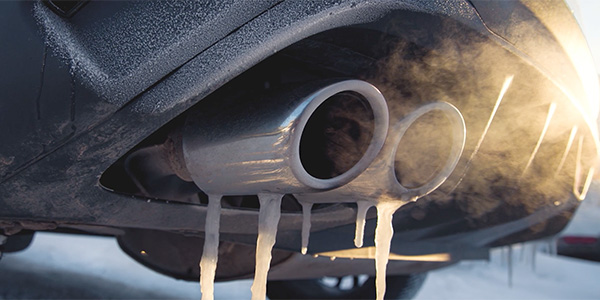When some people think about cabin air filters, they conjure up images of summertime, air conditioning and musty smells. The reality is that cabin air filters work the majority of their magic when temperatures drop.
Every technician knows vehicle tailpipe emissions are higher when the engine is cold. You can smell these emissions in the air when a vehicle starts and is idling on a cold winter morning while you are scraping the window. During these cold starts, the engine is running rich and the catalytic converter has not yet started operating. These emissions are substantial to the point that what’s coming out of the tailpipe can be damaging to the driver’s respiratory system.
Americans spend nearly 300 hours per year in their vehicles and the air inside a vehicle is actually up to five times more polluted than fresh air. Three-quarters of all vehicle climate problems are caused by a blocked cabin air filter – and this is more than just a nuisance: 35 million Americans suffer from symptoms related to inert allergens.
Science backs it up. According to a Kansas City Light-Duty Vehicle Emissions Study published in 2010, researchers found that particulate emissions increased exponentially as the temperature decreased. They calculated that these pollutants doubled for every 20° F temperature drop.
Vehicle emission particulates can range in size from 2 microns to 10 microns in diameter. Smaller particulates are invisible or appear as smoke, while larger particles can be seen sticking to the end of the tailpipe.
The one thing that can stop these exhaust particulates from reaching vehicle occupants is a cabin air filter. Some cabin air filters can even stop particulates that are as small as 1 micron in diameter.
Unlike some of the technology your customers are trying to come to grips with today –fully electric, hands-free vehicles come to mind – in-car air filtration is not a new idea. Nearly 95 percent of vehicles produced since 2000 have cabin air filters. Yet ask your customers if they’ve replaced their filter recently and you’ll likely get a blank stare. Many drivers simply don’t know they’re a critical part of their vehicle’s heating and ventilation system.
Why should drivers be encouraged to change their cabin air filters? First, all of the particles and contaminants that the filter collects from the outside air can clog the filter, reducing its efficiency. Additionally, cabin air filters play a crucial role in a vehicle’s heating, air conditioning and defroster systems. The moisture naturally contained in these systems can lead to mold and bacteria buildup on the filter over time.
Cabin air filters are available in different styles for different needs. But one thing is consistent – to keep a vehicle’s HVAC system in top shape, it’s recommended to replace the filter annually at least – or more often in harsh conditions.
Poor quality air can be more than just inconvenient for your customers and their passengers. Do them all a favor – visit PurolatorNOW.com to learn more about what you can do to help them.
I’m Doug Kaufman – thanks for watching.
This video is sponsored by The Group Training Academy.













